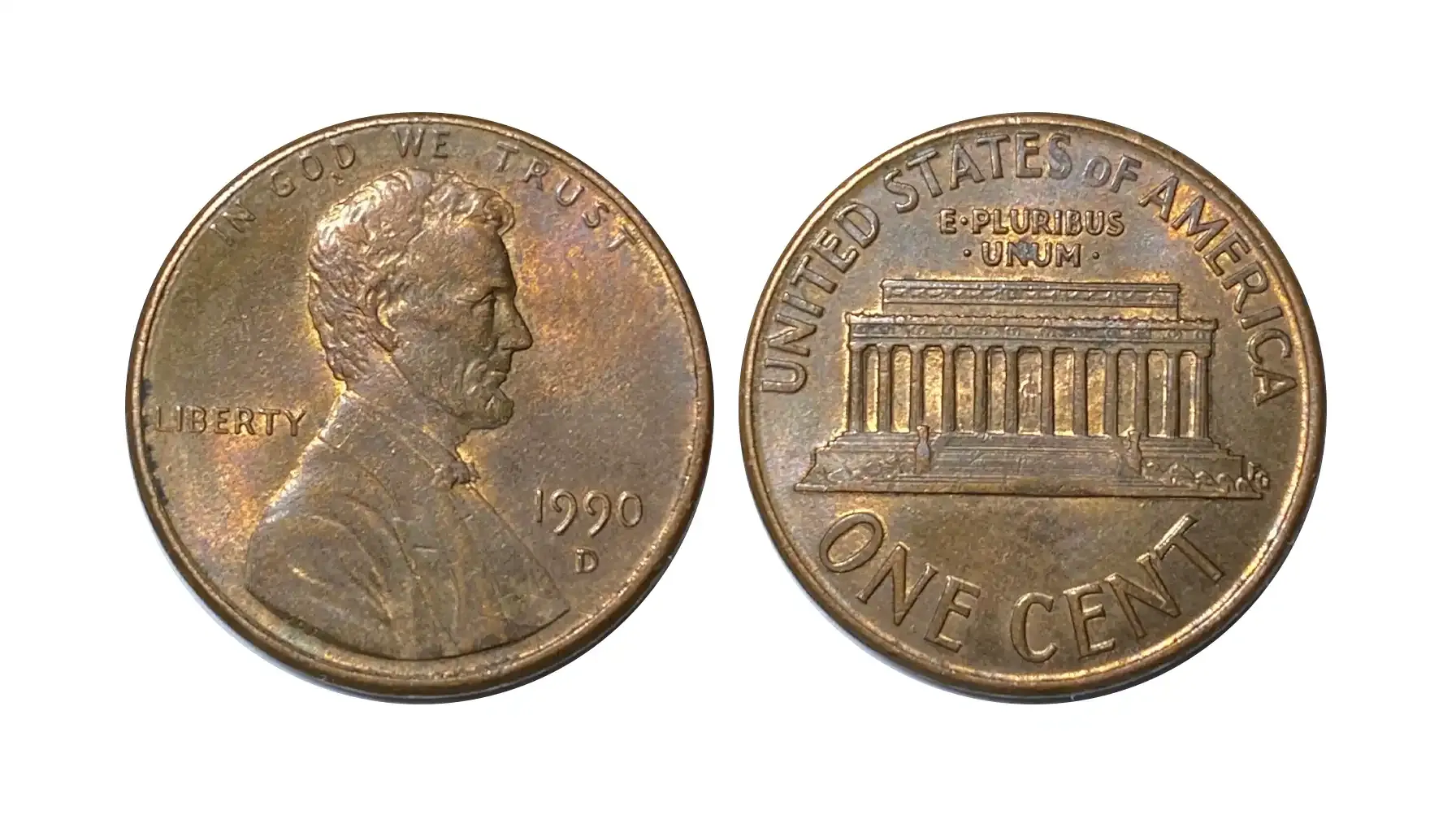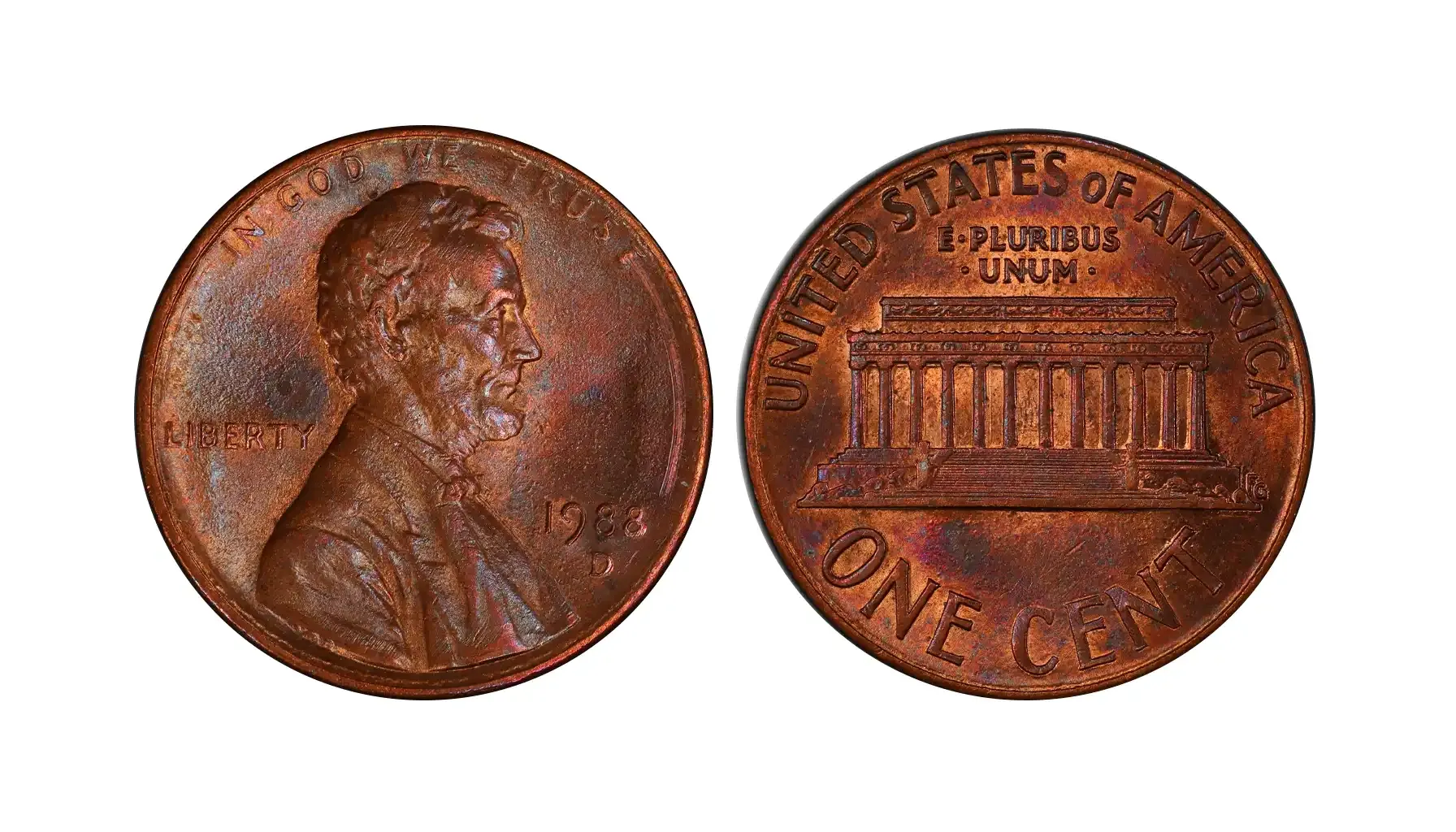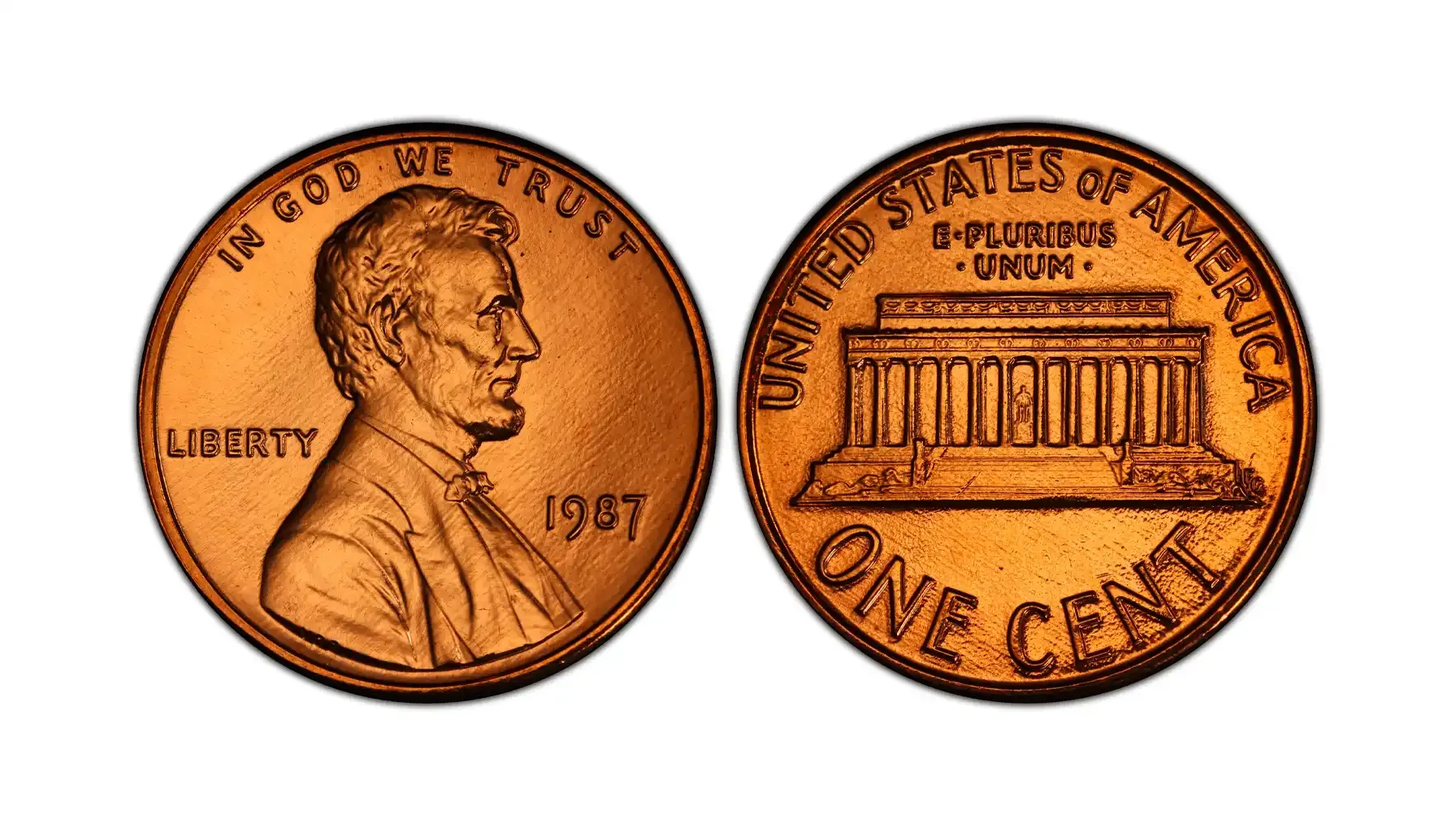Contents:
U.S. silver half dollars are a popular and valuable collectible among numismatists. They have a rich history and contain big amounts of rather expensive metal. So, they are valuable both for their numismatic and bullion content.
But what exactly are they? How much does a silver half dollar weigh? How does MS 65 in coins (and other Mint States) influence the value? How much is a silver half dollar worth today? And why do collectors want to have them?
Types of These Coins
Walking Liberty (1916-1947)
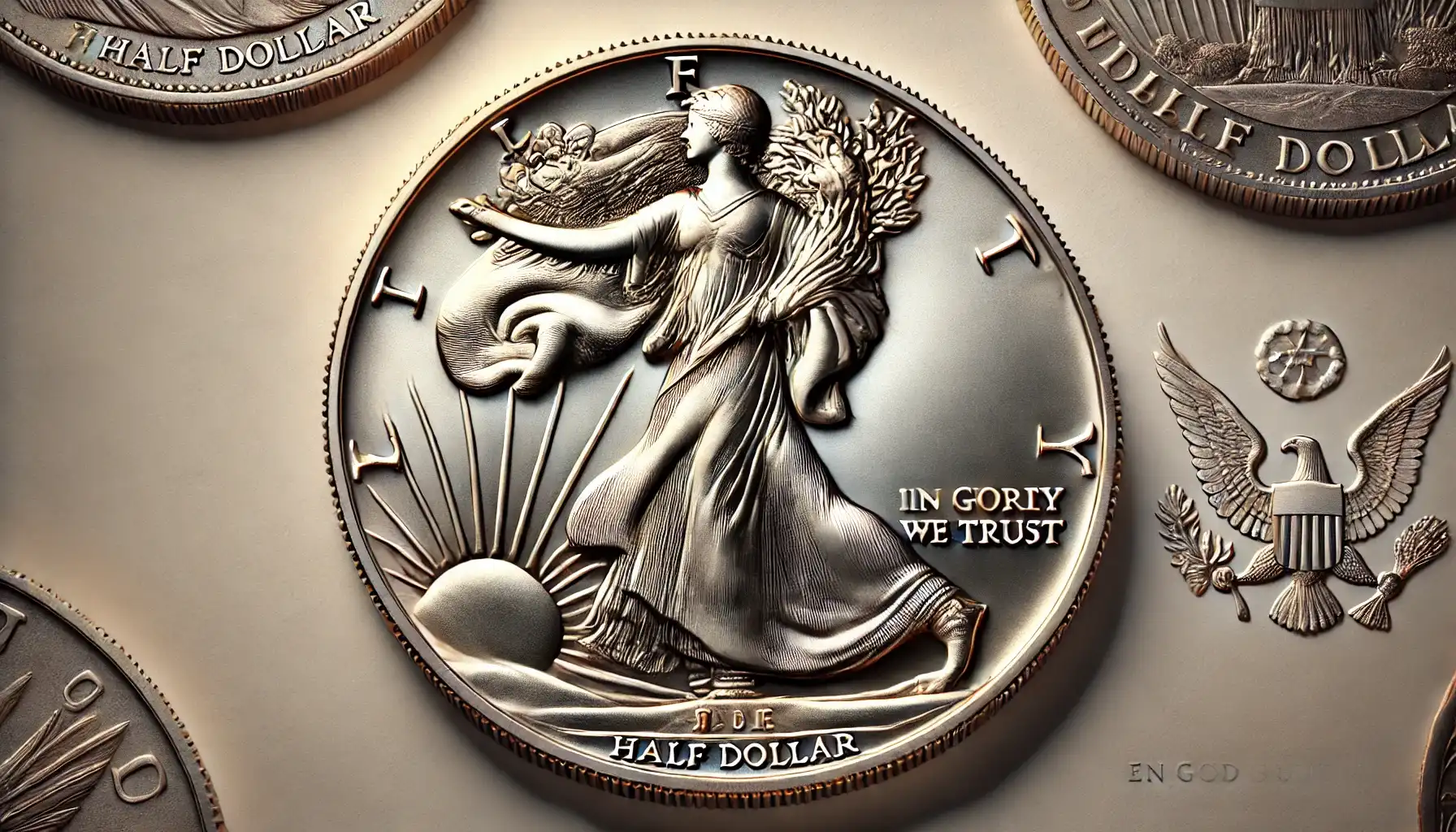
Designer: Adolph A. Weinman
How Much Silver in a Half Dollar: 90%
Key Silver Half Dollar Years: 1916-S, 1921, 1938-D
The obverse features Lady Liberty walking towards the sun, while the reverse shows an eagle perched on a rock.
Depending on the condition and rarity, the Liberty half dollar silver value can range from about $15 to several thousand dollars (acc. The Spruce Crafts).
Franklin (1948-1963)
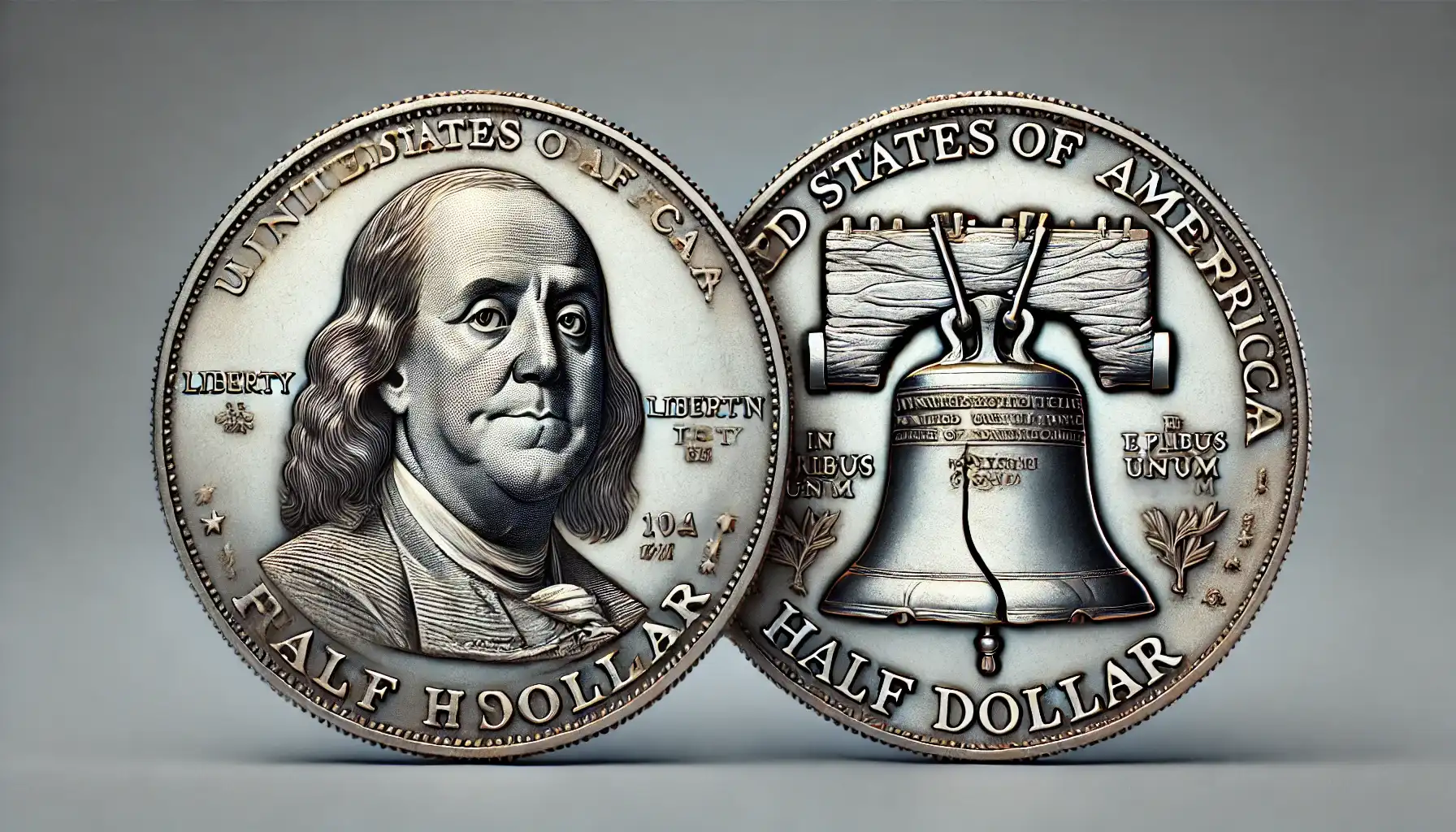
Designer: John R. Sinnock
Half Dollar Silver Content: 90%
Key Dates: 1949-S, 1955
The obverse features Benjamin Franklin, and the reverse depicts the Liberty Bell.
Typical values range from about $12 to several hundred dollars for rare dates and high-grade specimens (acc. U.S. Coins Guide).
Kennedy (1964-1970)
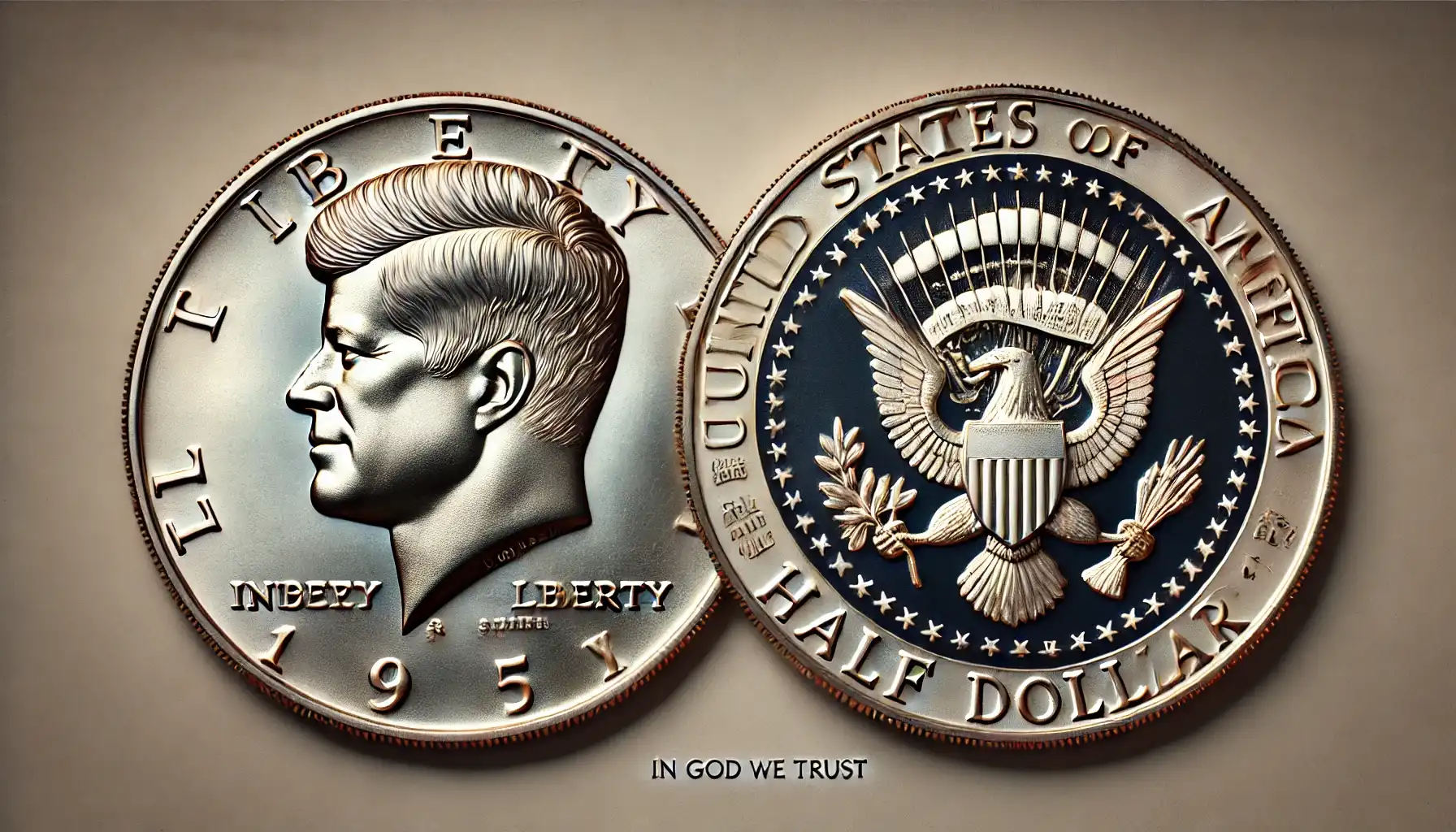
Designer: Gilroy Roberts and Frank Gasparro
How Much Silver in Half Dollar: 90% (1964), 40% (1965-1970)
Key Half Dollar Silver Years: 1964 for 90% silver, 1965-1970 for 40% silver
The obverse features President John F. Kennedy, and the reverse has the Presidential Seal.
The 1964 half dollars are worth around $10-$15 each, while the 40% versions from 1965-1970 are valued at around $5-$10 each (acc. U.S. Coins Guide, The Spruce Crafts).
What Influences Value
Condition (Grade): Higher grades (MS-63 and above) fetch higher prices.
Rarity: Coins with lower mintages or those with historical significance are more valuable.
Demand: Market demand for certain types or dates can influence value.
Metal Content: Intrinsic value based on the current price of metal.
Silver Half Dollar Melt Value Formula
Melt Value = Content (troy oz) × Spot Price of Metal (USD)
For 90% content (1964 and earlier):
Silver weight ≈ 0.36169 troy oz
Example (assuming silver = $25/oz): 0.36169 × $25 = $9.04
For 40% content (1965–1970):
Silver weight ≈ 0.1479 troy oz
Example: 0.1479 × $25 = $3.70
Melt Value Silver Half Dollar Chart
Type | Silver Composition | How Much Silver Is in a Half Dollar (troy oz) | Metal Price ($/oz) | Melt Value (USD) |
Walking Liberty (1916–1947) | 90% | 0.36169 | $20.00 | $7.23 |
$25.00 | $9.04 | |||
$30.00 | $10.85 | |||
$35.00 | $12.66 | |||
$40.00 | $14.47 | |||
Franklin (1948–1963) | 90% | 0.36169 | $20.00 | $7.23 |
$25.00 | $9.04 | |||
$30.00 | $10.85 | |||
$35.00 | $12.66 | |||
$40.00 | $14.47 | |||
Kennedy (1964 only) | 90% | 0.36169 | $20.00 | $7.23 |
$25.00 | $9.04 | |||
$30.00 | $10.85 | |||
$35.00 | $12.66 | |||
$40.00 | $14.47 | |||
Kennedy (1965–1970) | 40% | 0.1479 | $20.00 | $2.96 |
$25.00 | $3.70 | |||
$30.00 | $4.44 | |||
$35.00 | $5.18 | |||
$40.00 | $5.91 |
Notes: The weight is fixed per coin based on official U.S. Mint specifications. This chart is useful for bullion investors, collectors and dealers to evaluate the base metal value of half dollars.
How Much Does a Silver 50 Cent Piece Weigh?
The silver half dollar weight (U.S. one) depends on its specific series. The Walking Liberty one (minted from 1916 to 1947) and the Franklin one (minted from 1948 to 1963) both weigh 12.50 grams and are composed of 90% silver and 10% copper.
Similarly, the 1964 Kennedy Half Dollar also weighs 12.50 grams with the same composition. However, the coins (minted from 1965 to 1970) weigh 11.50 grams and consist of 40% silver and 60% copper.
These standardized weights ensure consistency and help collectors and traders verify the authenticity and value of the coins.

NGC Grading and Its Impact on the Silver Half Dollar Value Chart
NGC (Numismatic Guaranty Company) uses the Sheldon scale (1–70) to grade coins. Here is how it influences prices:
Grade | Features |
MS 65 | Sharp strike, few contact marks |
MS 67 | Strong eye appeal, near-flawless |
AU 58 | Minor wear, strong luster |
XF 45 | Light wear, details mostly intact |
VF 30 | Moderate wear, most design visible |
The higher the grade, the exponentially higher the value — sometimes tens of times more than a raw, circulated coin.
10 Most Valuable Coins (Pre-1964)
Year | Type | Mint Mark | Grade (NGC) | Approx. Value (USD) |
1921-S | Walking Liberty | S | MS 65 | $180,000+ |
1919-D | Walking Liberty | D | MS 66 | $90,000+ |
1916 | Walking Liberty | (none) | MS 67 | $80,000+ |
1955 | Franklin | (none) | MS 67+ FBL | $50,000+ |
1949-S | Franklin | S | MS 67 FBL | $35,000+ |
1938-D | Walking Liberty | D | MS 66 | $30,000+ |
1917-D Obv. | Walking Liberty | D | MS 66 | $28,000+ |
1921 | Walking Liberty | (none) | MS 65 | $26,000+ |
1964 | Kennedy | (none) | Accented Hair PR70 | $20,000+ |
1917-S Rev. | Walking Liberty | S | MS 65 | $18,000+ |
Disclaimer: Values depend heavily on grade, rarity, eye appeal, and auction results.
1. 1921-S Walking Liberty Half Dollar
This is the king of Walking Liberties. With a very low mintage (548,000) and poor survival rates in high grades, it's exceptionally rare in MS 65 or higher.
What is this silver half dollar coin value? The 1921-S commands over $180,000 in top condition and is a cornerstone of any advanced collection.
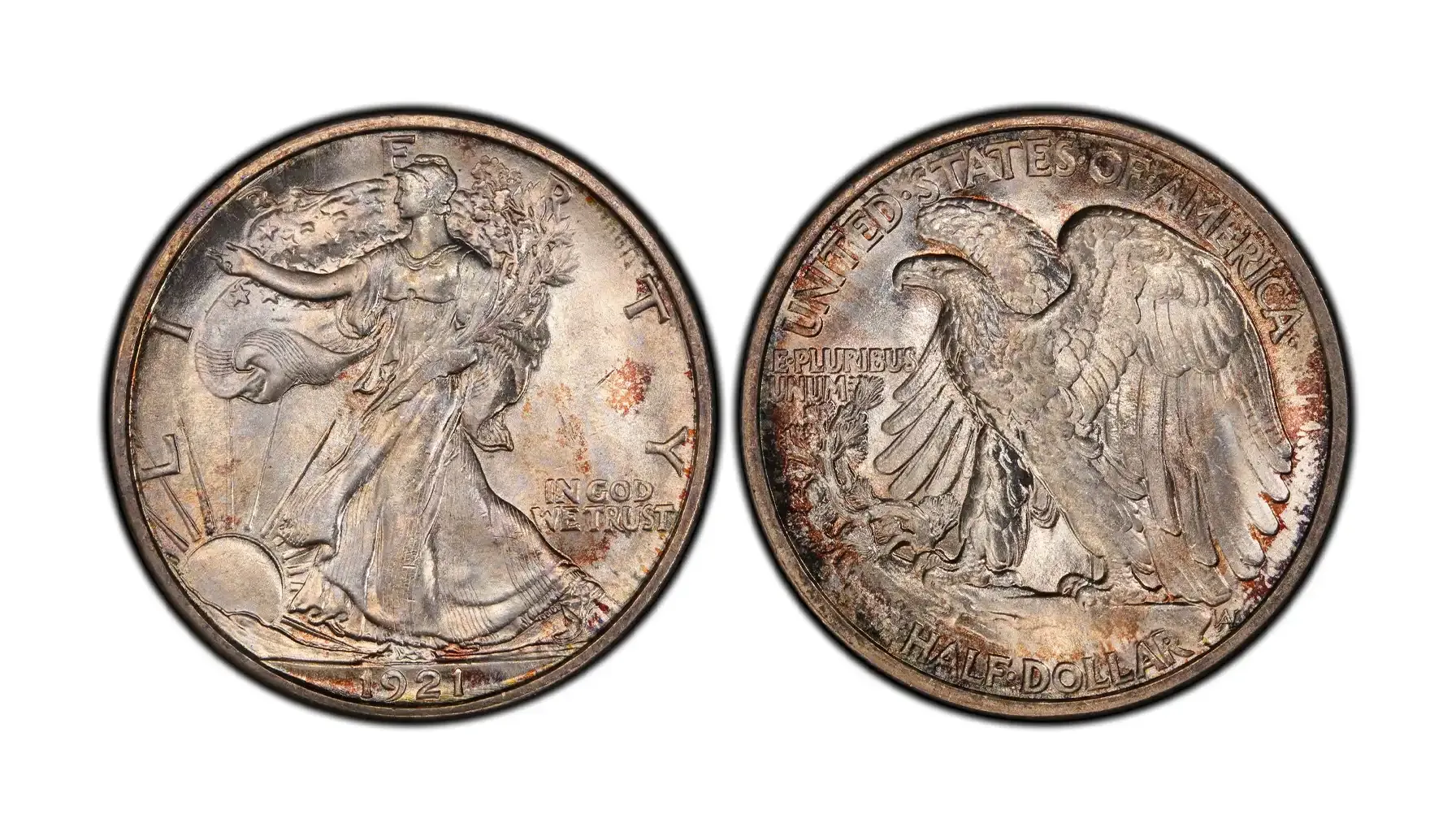
2. 1919-D Walking Liberty Half Dollar
Another rarity due to low production and circulation wear.
How much is silver half dollar worth? Even lower-grade versions fetch high prices, while mint-state coins with full detail can surpass $90,000, making it one of the hardest early 20th-century specimens to obtain in pristine condition.

3. 1916 Walking Liberty Half Dollar
This first-year issue is beloved for its design and historical importance.
What is a silver half dollar worth? Although not the rarest by mintage, high-grade versions (MS 67+) with strong strikes can sell for $80,000+, especially if certified by NGC or PCGS.
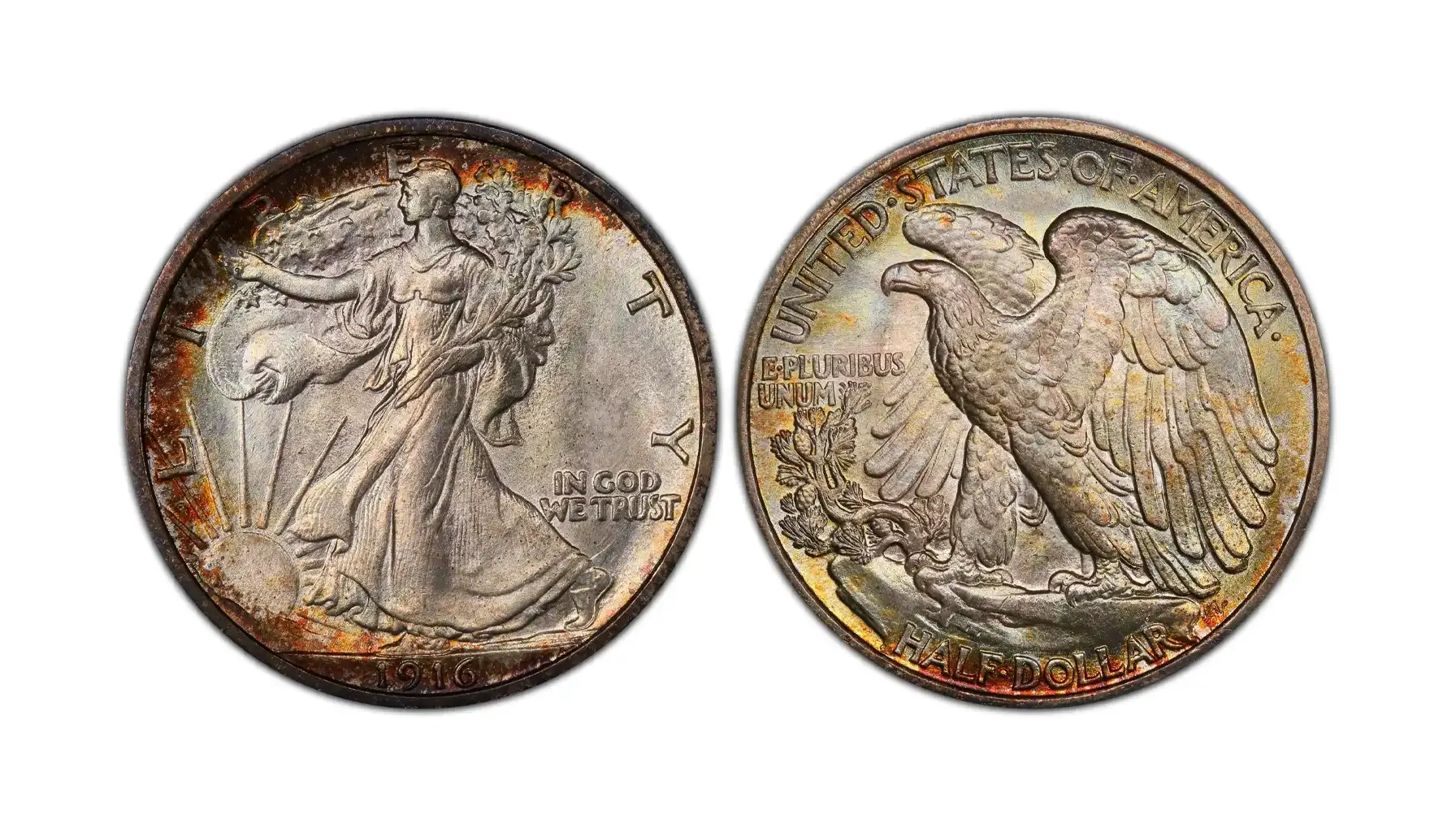
4. 1955 Franklin Half Dollar
The 1955 issue had a lower mintage, and examples with Full Bell Lines (FBL) are extremely desirable.
In MS 67+ FBL, it can command a value of a silver half dollar over $50,000, due to both scarcity and superb eye appeal.

5. 1964 Kennedy “Accented Hair” Proof
This variety, found on early 1964 proofs, features a sharper rendering of Kennedy’s hair.
What is the value of this half dollar silver coin? Graded PR70, it is one of the most valuable modern silver half dollars, with examples reaching $20,000+.

Why Do Collectors Love Them?
Historical Significance
They have a rich history that spans over a century. Each series, such as the Walking Liberty, Franklin and Kennedy ones, represents a different era in American history.
For instance, the Walking Liberty Half Dollar, minted from 1916 to 1947, is admired for its depiction of Lady Liberty striding towards the sunrise. It symbolizes the nation’s aspirations and resilience during the early 20th century (The Spruce Crafts).
The Franklin one, in turn, was introduced in 1948. It reflects post-World War II America and honors one of its founding fathers, Benjamin Franklin.
Intrinsic Value
The intrinsic value of these coins (particularly those that were minted before 1971) lies in their content. So, how much silver is in a silver half dollar?
Coins minted in 1964 contain 90% of this metal, while those from 1965 to 1970 contain 40% of it. This precious metal content ensures that these coins retain significant value regardless of their condition or rarity. As metal prices fluctuate, the bullion value of these coins provides a solid foundation for their market value.

Rarity and Collectibility
Of course, certain dates and mint marks are rarer than others. For example, the 1916 and 1917 Walking Liberty specimens with mint marks on the obverse are particularly sought after.
How much is silver half dollar worth? Coins with low mintage numbers or those in exceptional condition can command high premiums. Collectors enjoy the challenge of finding these rarities and building rare sets.
Sum Up
These pieces are not rare in the world of numismatics, but many collectors love them in a special way, e.g., different silver bicentennial half dollar specimens.
If you suspect that you have found one, try to scan it using the Coin ID Scanner app. It will immediately show you all the necessary information about the coin, its value and history.

